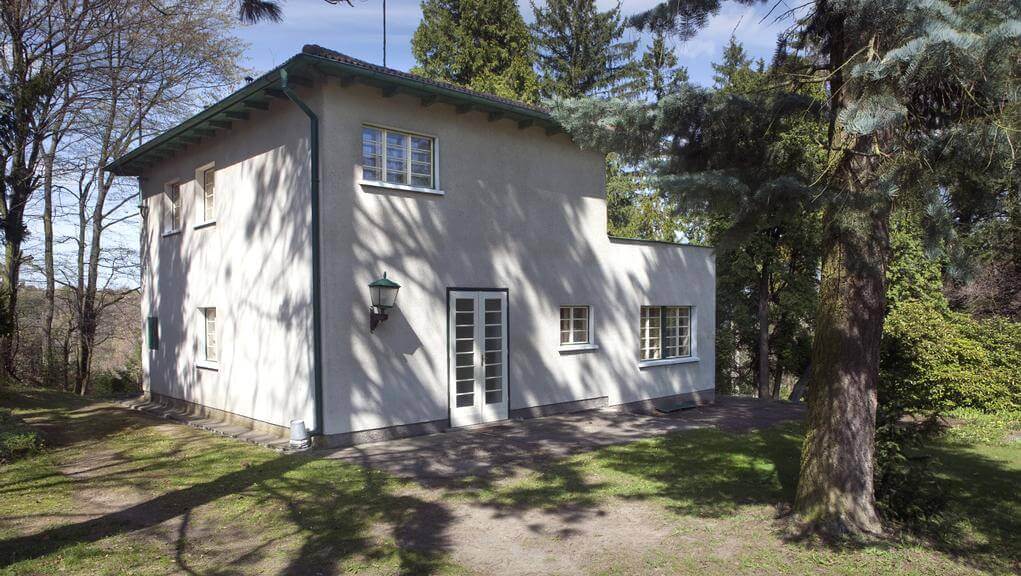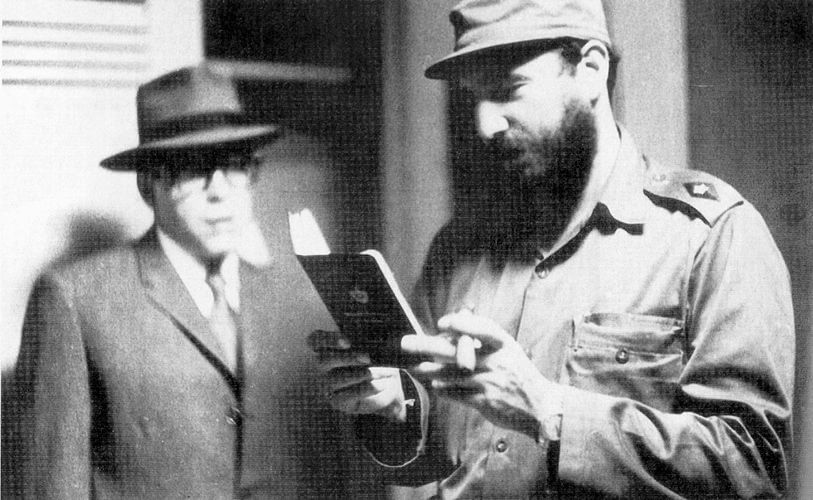“The most complete human being of our age.” claimed Jean-Paul Sartre. “A pupil of the school of terror. A dogmatic, cold and intolerant sectarian,” wrote the Black Book of Communism. “Che” generates inexorable response, but even now, fifty years after his death, he never fails to fascinate. His tragic end, several famous photographs, and the sixties have made him immortal. Time magazine counted him among the most influential people of the 20th century. And even in many shacks across South America, you can find his portrait hanging right next to the crucifix.
“Che” strongly believed in spreading revolution by guerilla warfare – and in this way he was also connected to Czechoslovakia. In March 1966, he secretly arrived in Prague, where he made the preparations for his last expedition – Bolivia.
A guerilla of the atomic age
“Yes, we have executed, we are executing, and we will continue to execute as long as necessary.”
When one says Guevara, some people think of a murderer and a false idol depicted on a t-shirt. But was he really a murderer? Or a hero? Or is it more complicated? And why does he still draw such attention? Let us try to judge him in the context of the place and time where he lived. Ernesto Guevara was born in 1928 in Argentina; from early childhood, he suffered from asthma and as a result embarked on a career in medicine. At the beginning of the fifties, however, he stopped studying medicine and decided to travel across South America where he witnessed extreme poverty for the first time. In 1954, he reached Guatemala, just in time to witness violent overthrow of the government by the CIA. The experience intensely affected Guevara – and led him to the conclusion he never gave up: the USA was preventing people from fighting inequality, incremental reforms did not work, and the only way towards a better world was revolution by armed conflict.

Guevara held to this faith and joined the Cuban revolutionaries. Initially, they achieved some success – in 1959 they managed to overthrow the pro-American dictator Fulgencio Batista. To Che Guevara this triumph was “the example of our revolution for Latin America, and the lessons it has taught by destroying all armchair theories. We have demonstrated that a small group of determined persons, supported by the people and not afraid to die if necessary, can wind up defeating a regular, disciplined army, and do so once and for all.” Guevara’s words belong to an age where armed revolution was supposed to secure independence for countries of the Global South. And “Che” held deep convictions about his mission, which led to his reputation as a hardened revolutionary.
The following yearss in Cuba are among the darker parts of Guevara’s life. According to many witness accounts, “Che” was uncompromising when it came to political critique, opposition, and nonconformist thinking. Right after seizing power, he ordered the executions of policemen and functionaries who had served under Batista and he personally oversaw their executions. This image is further reinforced by the famous words he said at a UN meeting in 1964: “Yes, we have executed, we are executing, and we will continue to execute as long as necessary.” Guevara helped Castro to establish an authoritarian regime that kept on persecuting its opponents years after the revolutionary’s death.
Exporting revolution
But that is not all we need to accurately judge “Che”. Take into account the system in which someone like him could operate. The Czech philosopher Václav Bělohradský once wrote s about Guevara that,“There is no doubt that he fought against injustice (…) Che Guevara opposed dictators like Paraguay’s Alfredo Stroessner: his fight belongs in the context of armed resistance against dictatorship.” The Cuban revolutionaries did not overthrow a liberal democracy. They faced the autocrat Batista as well as other pro-American dictators and ultimately the government of the United States itself, which in its fight for the world did not hesitate to resort to participating in crimes committed by its allies. Today we know that between 1948 and 1990, the USA helped overthrow around twenty four governments in Latin America. And as the historian John Coatsworth notes, between 1960 and 1990, the amount of victims and politically motivated violence in Latin American dictatorship easily overshadowed the political violence in the Soviet bloc.

Guevara and Fidel Castro were products of these conditions and it was no secret that they wanted to spread the example of Cuban revolution elsewhere. Cubans provided like-minded guerillas in other Latin American countries with arms and training. And, as we know now, they were helped in this by Czechoslovakia. As part of an operation called “MANUEL,” Czechoslovakia provided secret transportation for several hundred Latin American guerillas, forged fake passports for them and provided shelter and recreation in Prague. But, eventually, exporting the revolution ended a fiasco.
In 1965, Guevara retreated from Cuban public life. He resigned as Minister of Industry, which he was not handling well, in the belief he would change the world by guerilla warfare. He first headed to Africa – more specifically, Congo where he wanted to spark a revolution. His attempt failed, he suffered from his asthma, and his co-fighters spent Soviet money on alcohol and prostitutes. “The main disadvantage of the locals is that they do not know how to shoot,” wrote “Che” in his diary. In the end, he narrowly escaped Congo to Tanzania and went on to spend the next couple of months in Czechoslovakia.
The Czech tracks
Che Guevara arrived in Prague, in secret, in March 1966. He was recuperating from his stay in Congo and preparing for another guerilla campaign. “Che” first spent a couple of weeks in a secret flat for Latin American guerillas who stayed in Prague. Then he probably moved into the secret “Country” villa in the village of Ládví, not far from Prague.
“Che” was disguised as an Uruguayan merchant called Ramón Benítez. He did not want his presence to be known because he did not trust Czechoslovakians and was even afraid that someone within the Czechoslovakian secret service might give him away. Guevara’s security was handled by the Cubans themselves and his disguise was kept up by a personal make-up artist who cut the fearsome guerilla’s hair, shaved him and provided him with a huge overbite courtesy of false teeth. It is interesting to note that Czechoslovak politicians would only learn officially about Guevara’s stay several years later. In 1970 the Secretary of Foreign Affairs Ján Marko visited Cuba where was informed about “Che” in Czechoslovakia by Fidel Castro himself.
Information on Guevara’s secret stay is often contradictory. According to some, he suffered from depression there. According to others, he read, wrote and practiced shooting at the garden of his villa. During his stay in the Czech Republic, Guevara was accompanied by his wife Aleida, who wrote this in her memoirs: “Prague was an enchanting city; but the fact that we didn’t have much of an opportunity to enjoy it fully didn’t matter to us. We had to maintain strict discipline, functioning in absolute secrecy. It was enough for us to simply be together again. (…) Similarly, we never got to see Karlovy Vary, a beautiful spa town Che very much wanted us to visit together.“ She also mentioned several details about her stay with Guevara: “We stayed in two places: one was the apartment (…) with only one room with a bed. We stayed there for a week. Then we moved to a large, comfortably country house. The owner lived there with her daughter (…). They cooked for us and we were there with other compañeros who were preparing to go to Bolivia with Che.”
Death and resurrection
After four months, Guevara left Prague for Cuba. And then, in November 1966, he secretly flew to Bolivia where he hoped to incite another guerilla war. Choosing Bolivia turned out to be a fatal mistake: while it was incredibly poor, the locals had no interest in revolution. The folk in the country, where Guevara and his men moved and worked, did not support him, did not welcome him, and did not see the point of his expedition. Not a single farmhand joined the guerillas, not even when “Che” tried running a medical practice in some villages.
“Che” spent eleven months in Bolivia, fighting against overwhelming numbers, without provisions and without support. The Bolivian army hunted him relentlessly – and eventually cornered him on October 8th 1967. The soldiers surrounded his group of seventeen tired men, captured Guevara and a day later he was executed without a trial by the Bolivian sergeant Mario Terán, who was ordered to shoot him. The soldiers then paraded the dead revolutionary before the public and unwittingly created a myth – the photos of Che’s body like Christ taken down from the cross have spread around the world.
Guevara’s life was romantic as well as cruel. And that is why his legacy creates such contradictory responses. “Che” was arrogant because he firmly believed he knew what was right for the people and did not want to put power in their hands. He spread revolution where it was not wanted and helped to build an oppressive government in Cuba. But he was not afraid to sacrifice himself for the ideals he believed in, for which he earned respect – even the respect of his enemies. After his death, he became an icon of defiance among the radical students in the West and protests against the war in Vietnam. He also became the symbol of hope for a more just world for the people who live in slums, the inhabitants of colonies who desired independence or for those who resisted racist apartheid, such as Nelson Mandela. And that is the interesting thing about Guevara: his legend remained with various rebels, revolutionaries and guerillas, and crossed the borders of various political ideologies. He became the archetypal revolutionary and freedom fighter.
To end on a high note, let us recall the memory of the well-known Czech writer Arnošt Lustig, who visited Cuba and met Guevara in 1961. Lustig’s memoirs says Guevara “did not look like a dangerous revolutionary for whose head distant governments would soon be willing to pay the biggest money.” Lustig even took a photo with him. Finally, he mentions this anecdote: “Later on, I talked with a former boss of American intelligence, now retired. I gave him the picture of me and Che Guevara as a present. He told me: ,We never wanted to kill him. Bolivians did that on their own accord.’ After some time, when we met again, he showed his bedroom. On his nightstand, next to the picture of his wife, there was the picture on which I wrote: ,To James Sch., by Che Ernest Lustig.’ (Che means friend, buddy, yeah, yes).”
**
Translation by Michal Chmela.
![Political Critique [DISCONTINUED]](http://politicalcritique.org/wp-content/uploads/2015/09/Political-Critique-LOGO.png)
![Political Critique [DISCONTINUED]](http://politicalcritique.org/wp-content/uploads/2015/09/Political-Critique-LOGO-2.png)